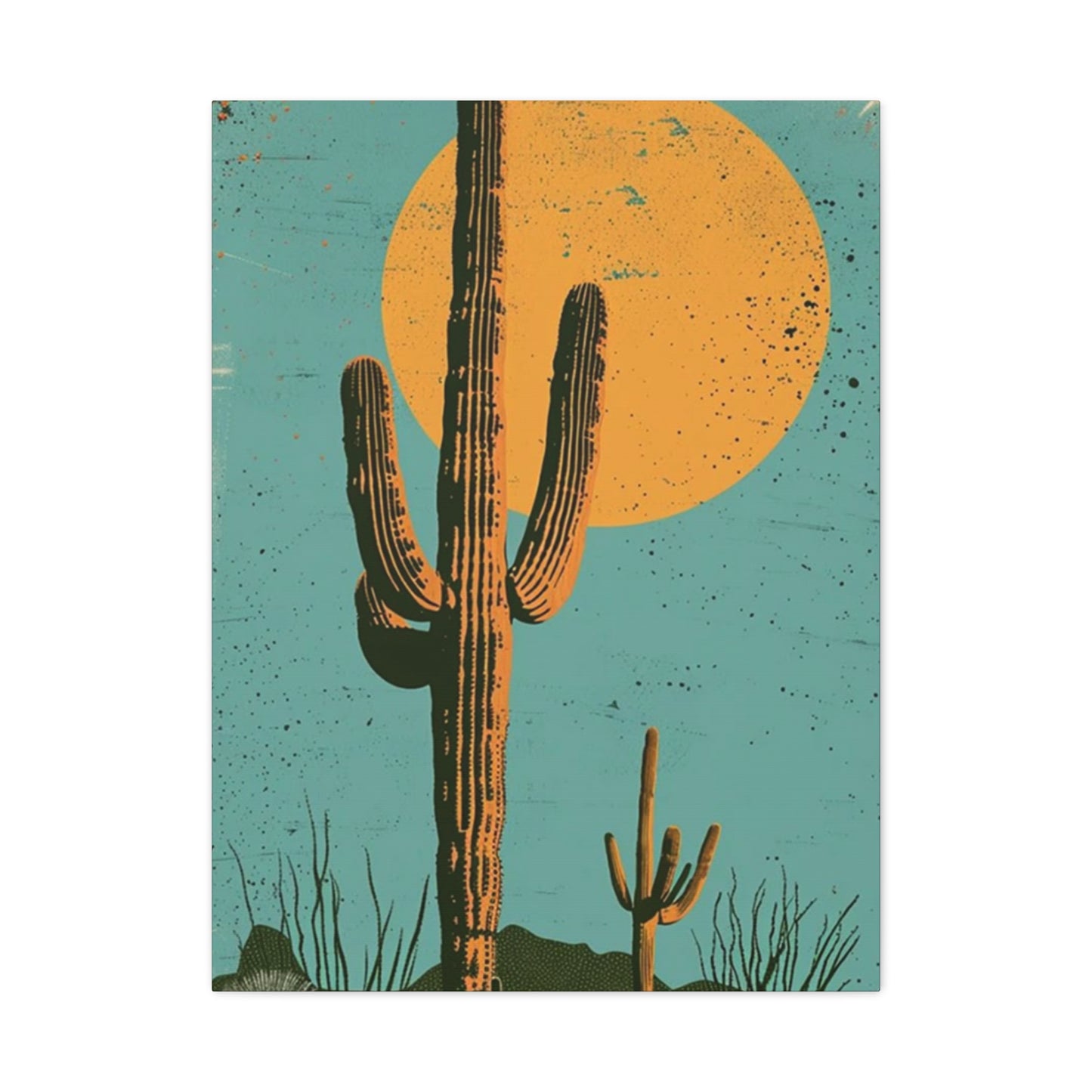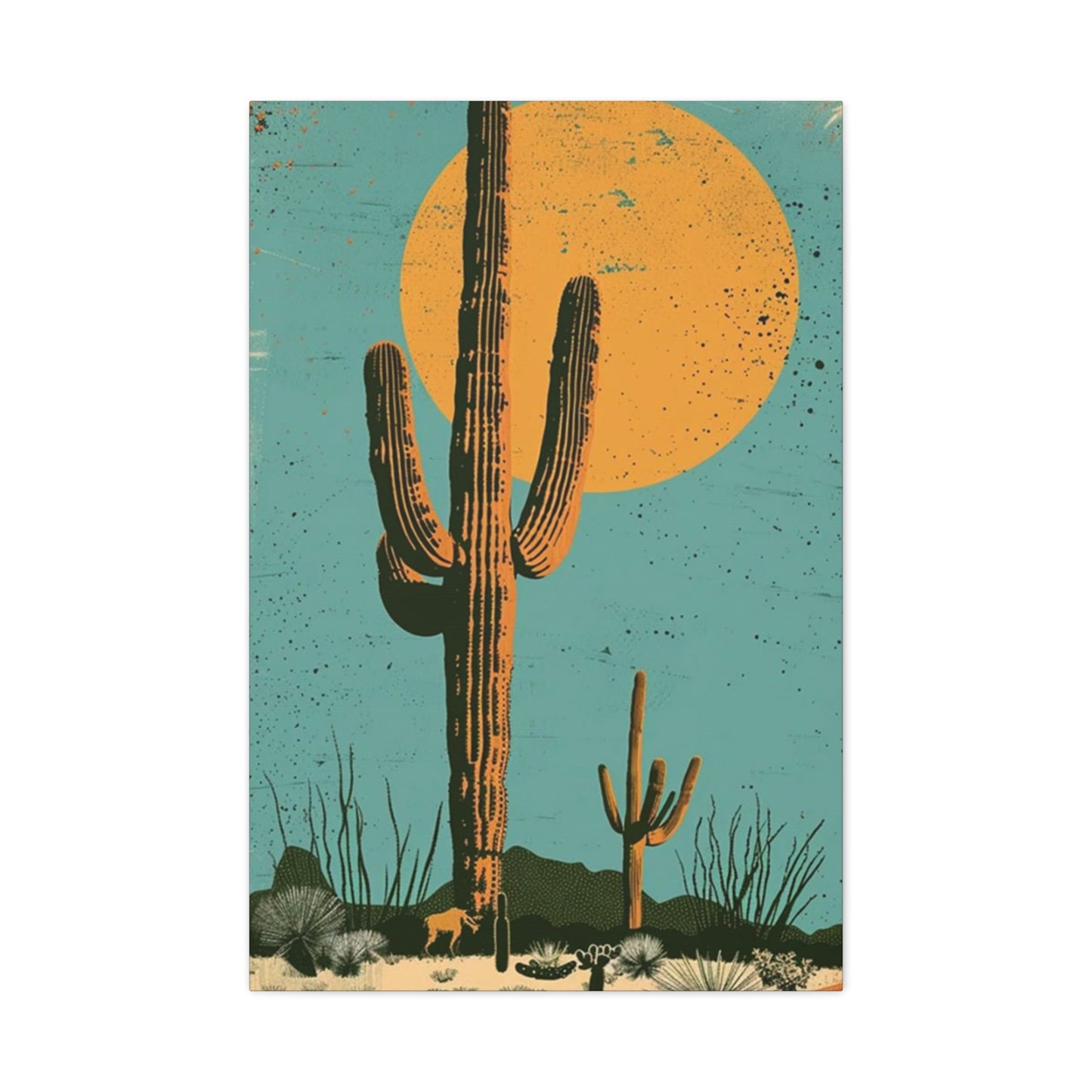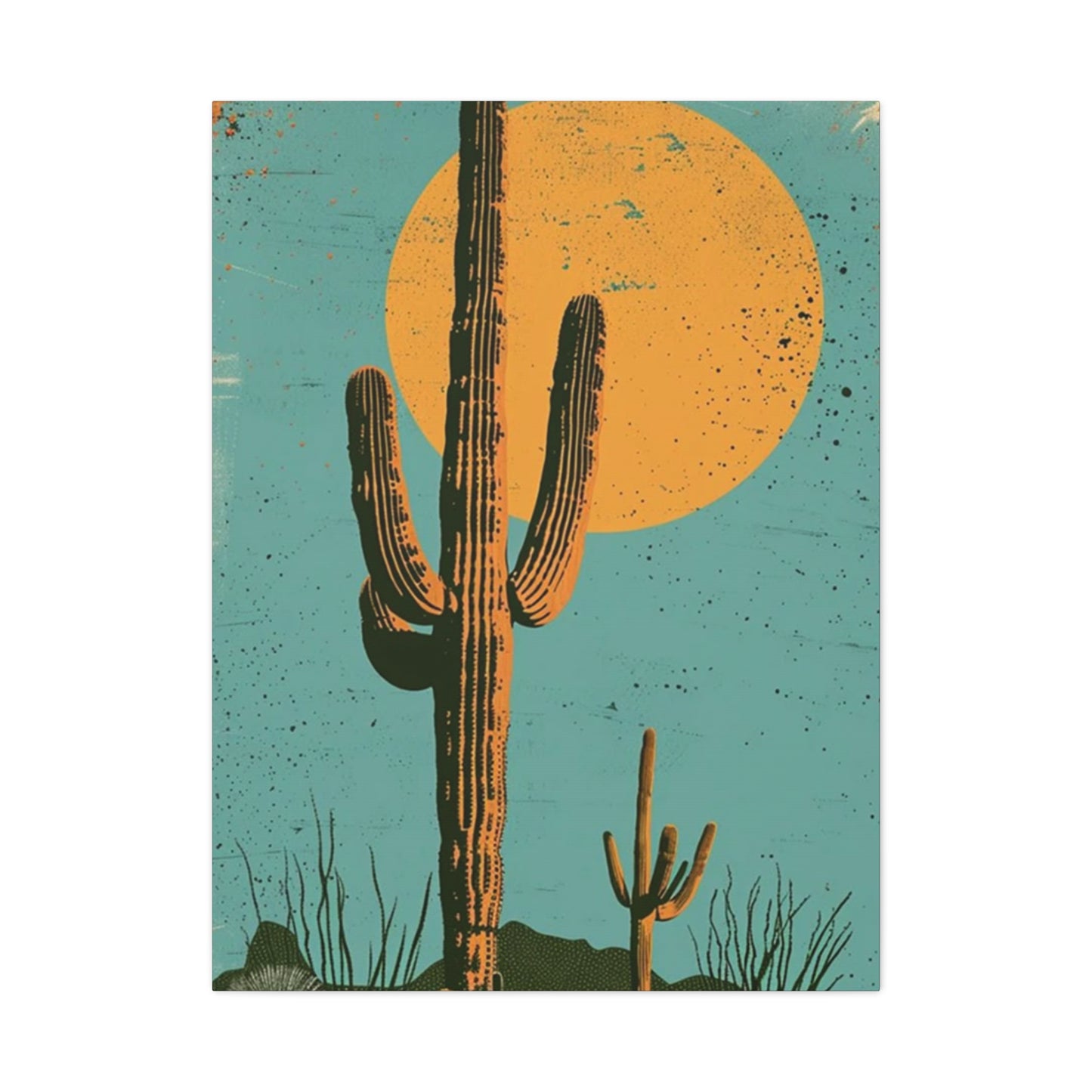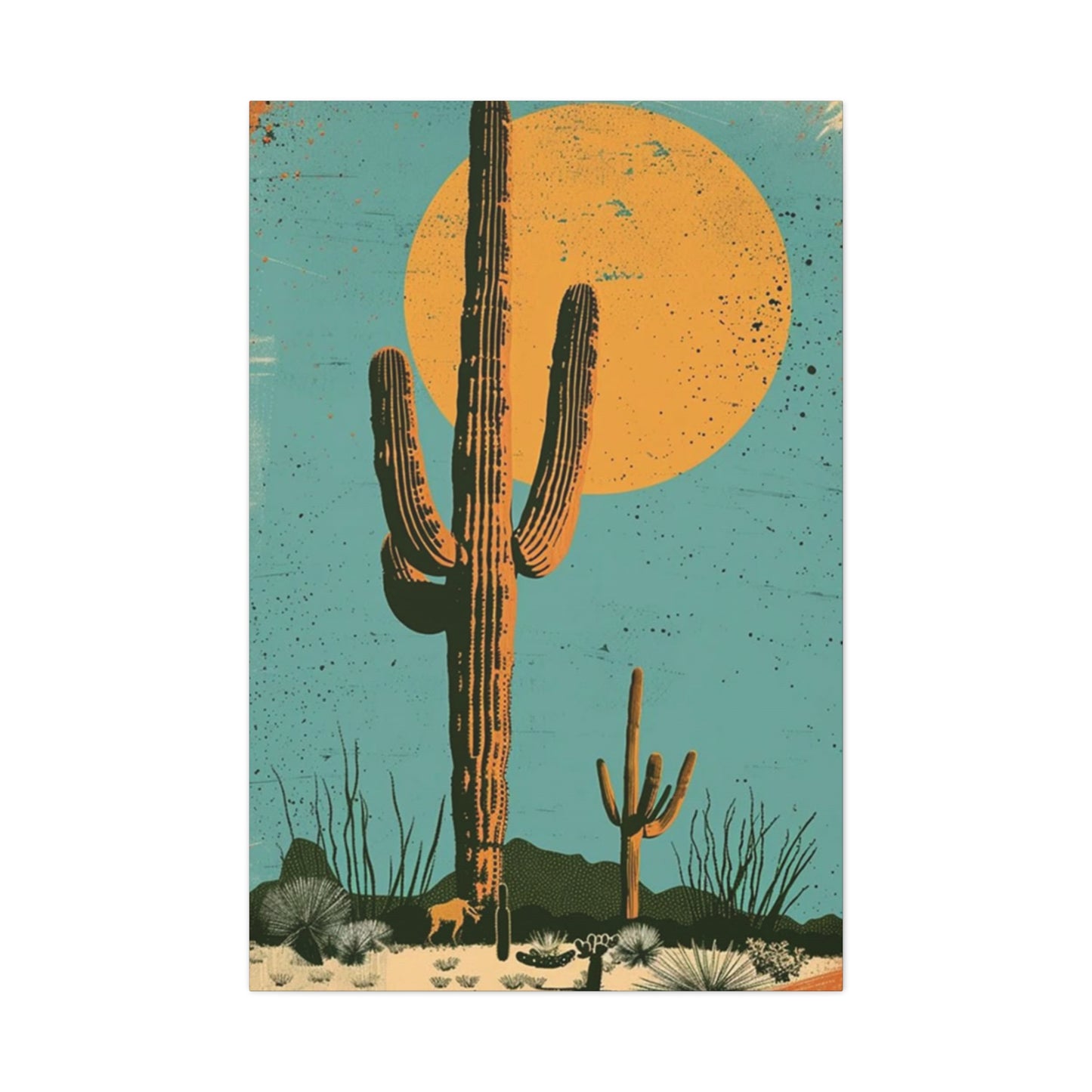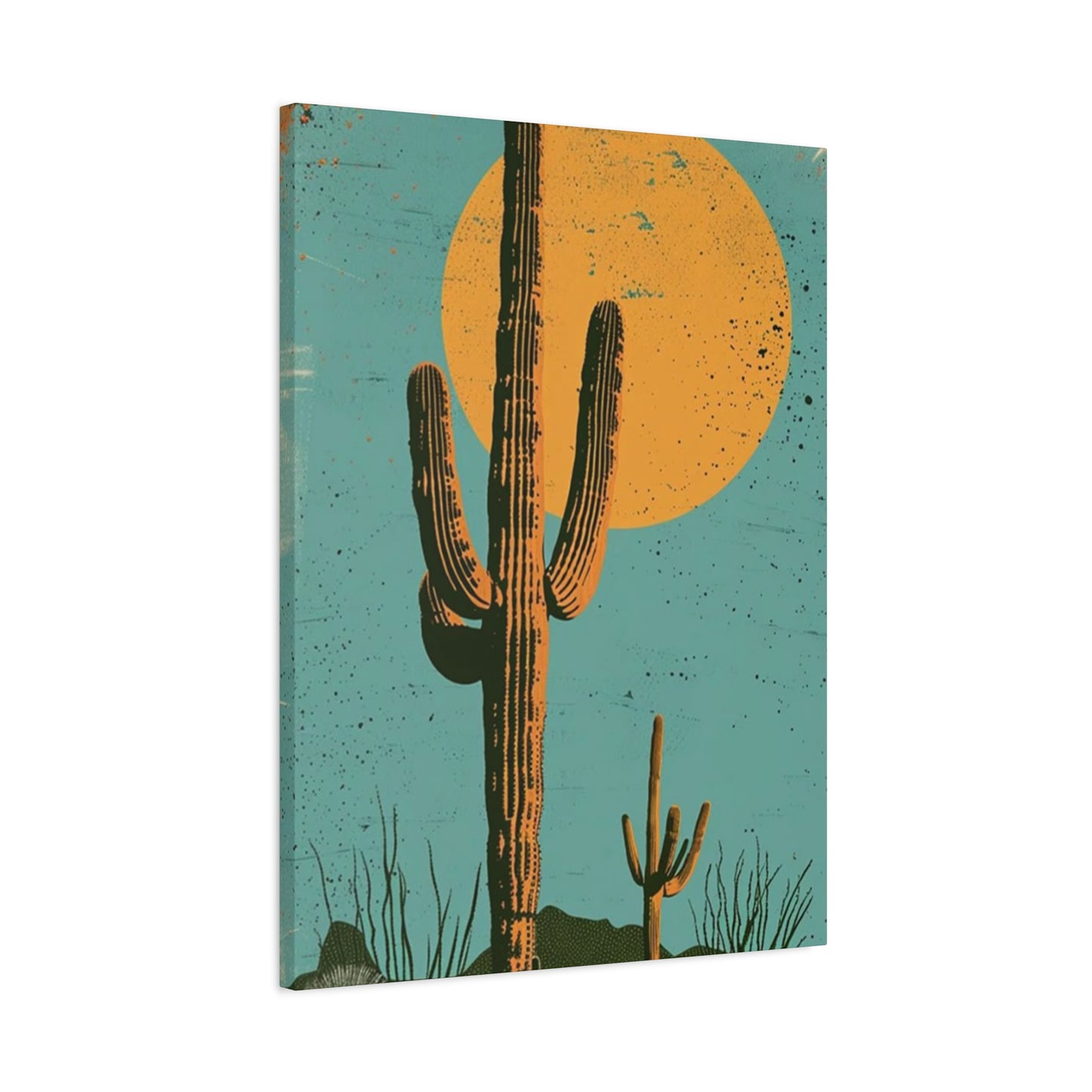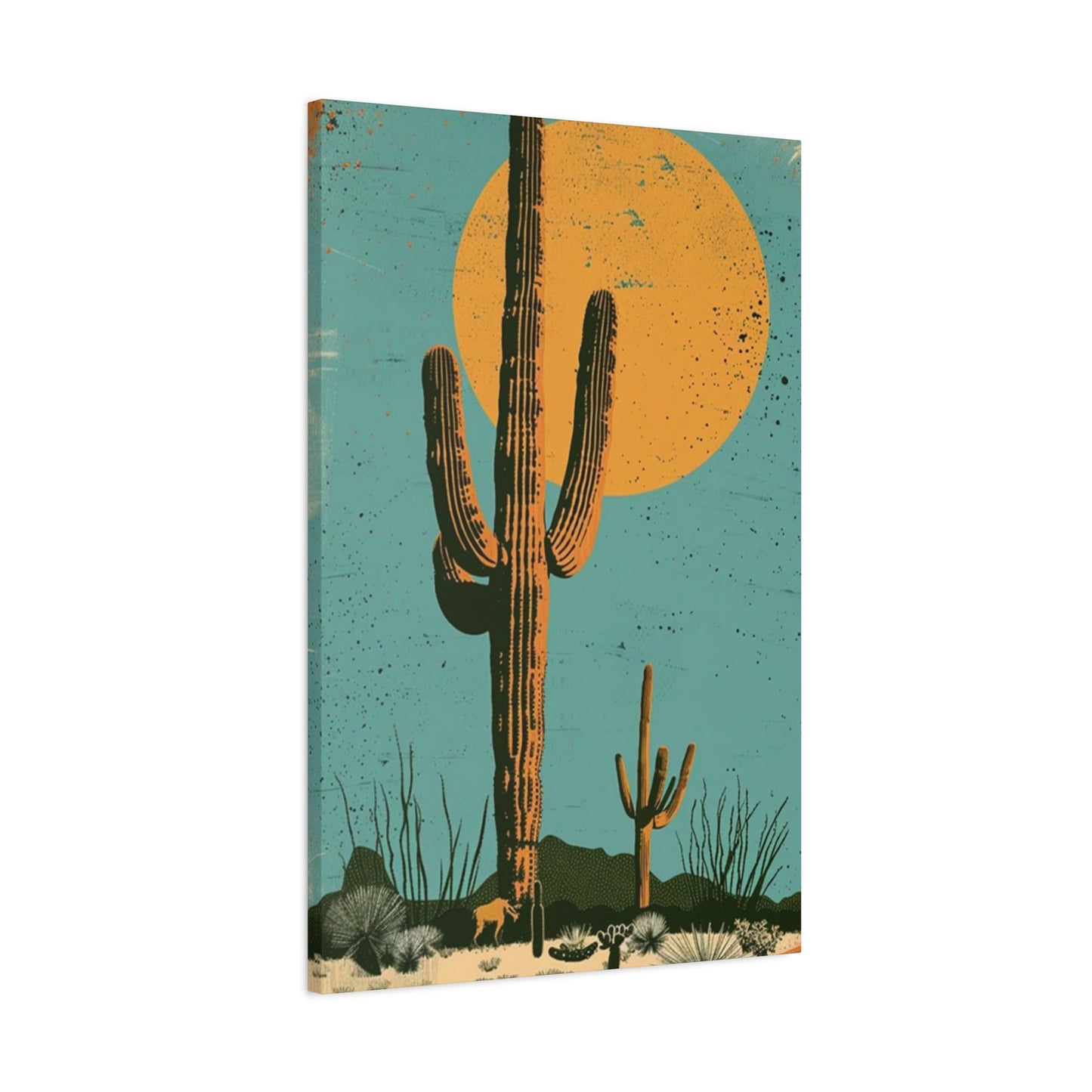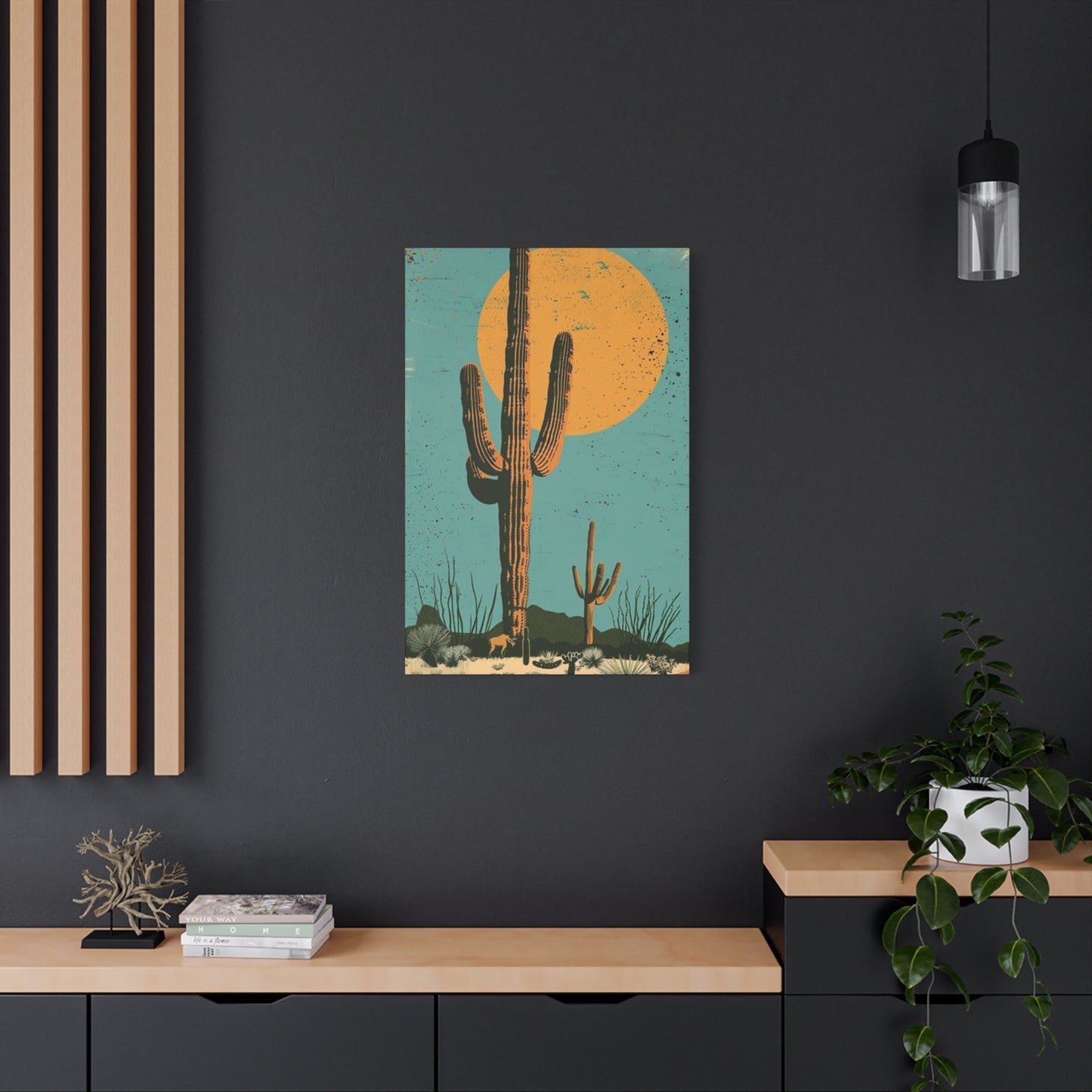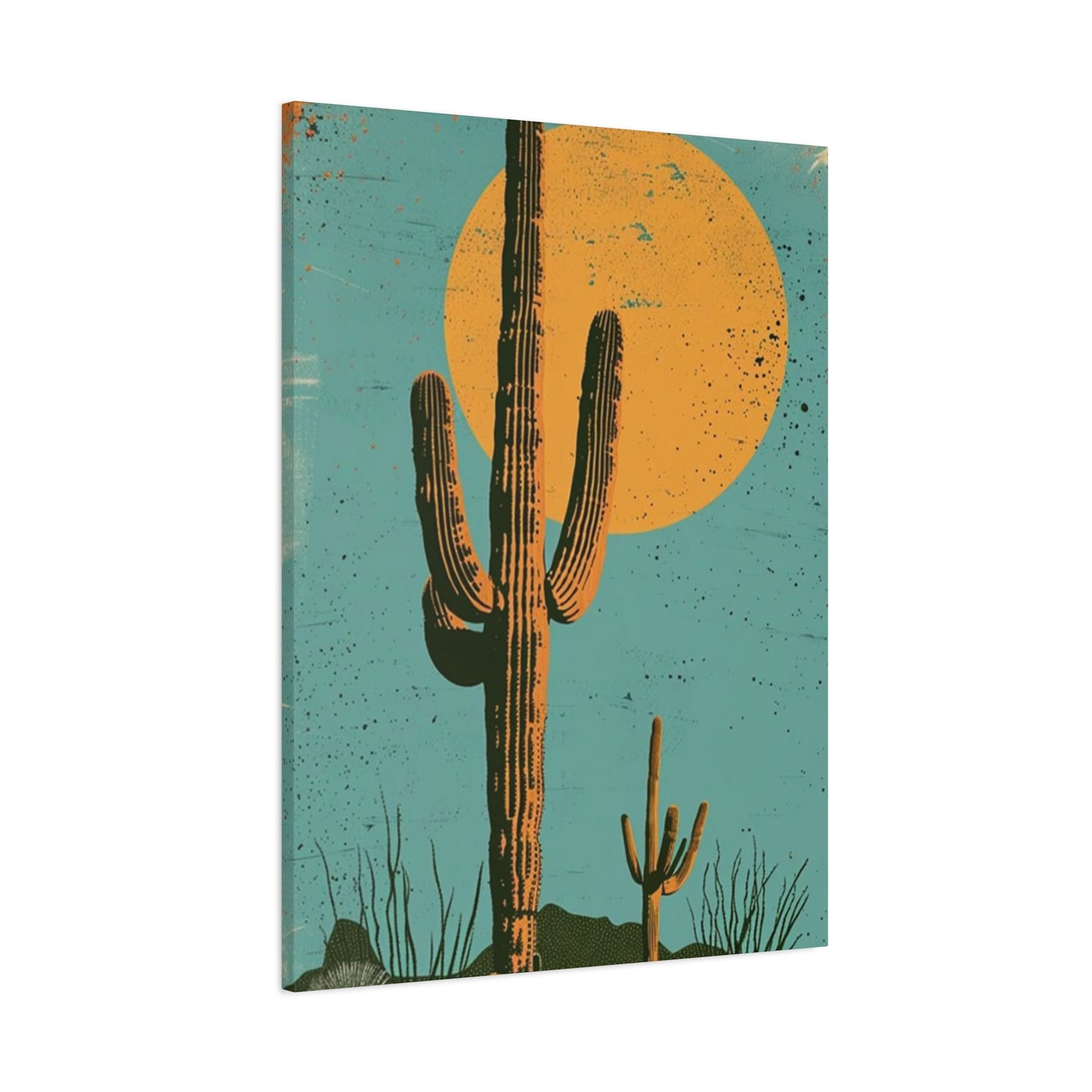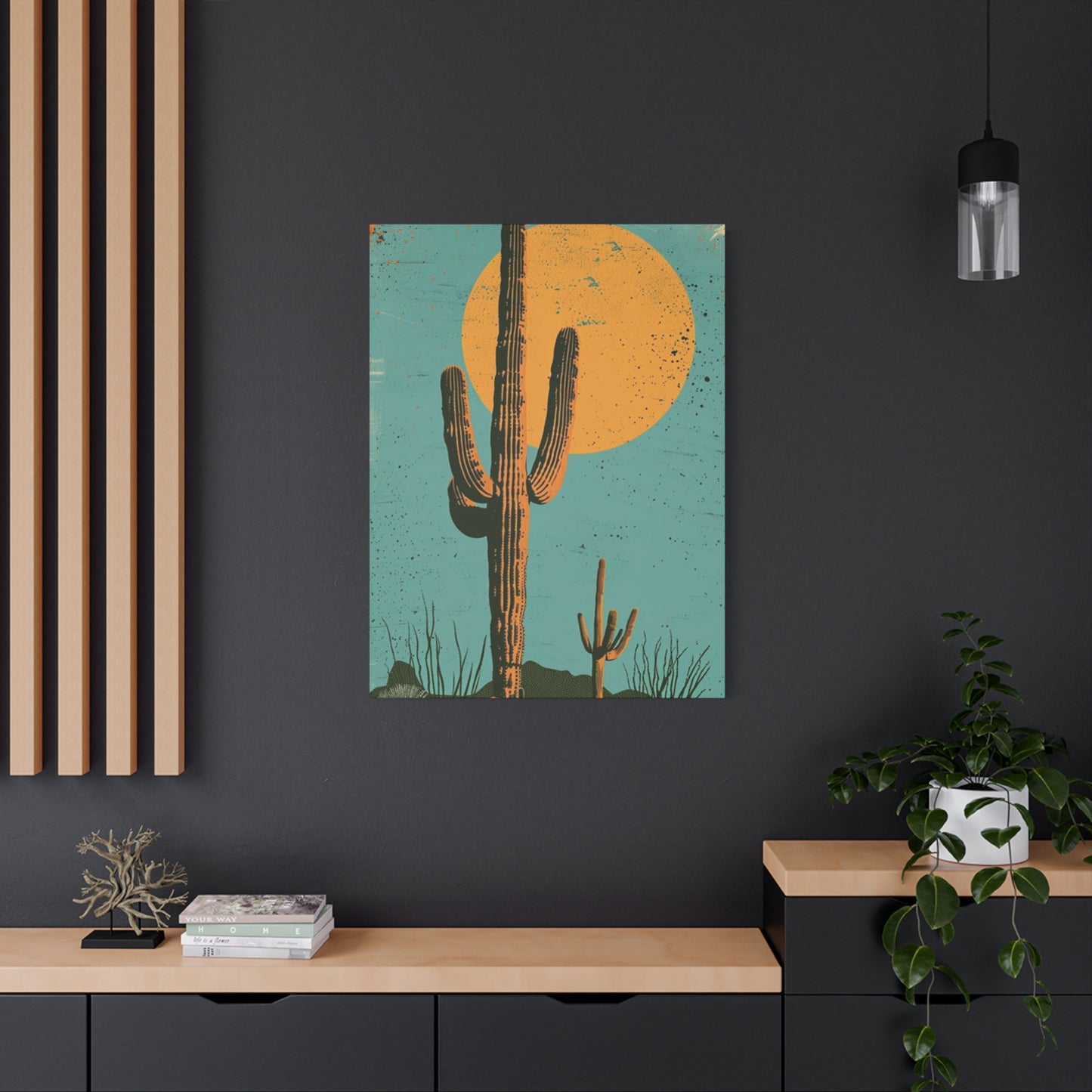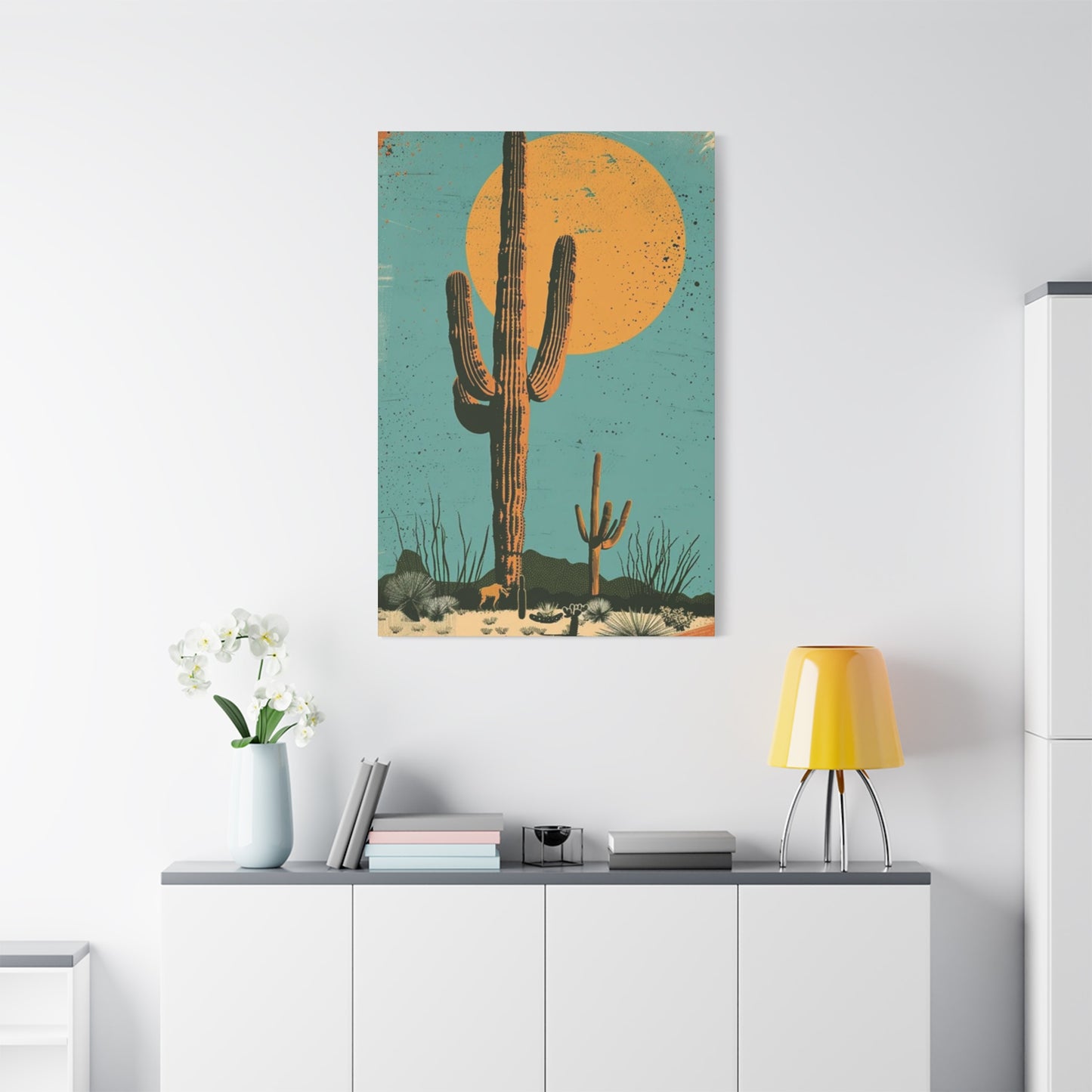Bring the Southwest Indoors with Cactus Desert Wall Art
Desert landscapes have captivated human imagination for centuries, and among the most iconic symbols of these arid environments stands the majestic cactus. Large cactus in desert wall art canvas prints have emerged as one of the most sought-after decoration choices for homes, offices, and commercial spaces worldwide. These stunning visual pieces bring the raw beauty of desert wilderness into interior spaces, offering a perfect blend of natural elegance and contemporary style. Whether you are drawn to the towering saguaro cactus silhouetted against a crimson sunset or the sprawling desert floor dotted with various cacti species, these canvas prints offer an exceptional way to introduce warmth, character, and sophistication to any room.
Understanding the Appeal of Desert Cactus Canvas Art
The popularity of large cactus in desert wall art canvas prints stems from multiple factors that resonate with modern decorating sensibilities. Desert imagery evokes feelings of tranquility, resilience, and timeless beauty. Cacti themselves represent survival, adaptation, and strength in harsh conditions, making them powerful symbols in interior design. When translated onto canvas, these desert giants create focal points that command attention while maintaining an organic, calming presence.
The visual impact of desert cactus artwork extends beyond mere decoration. These pieces serve as windows into vast, open landscapes that many urban dwellers rarely experience. The warm earth tones commonly featured in desert scenes complement a wide range of interior color schemes, from neutral palettes to bold, vibrant designs. The structural forms of cacti provide interesting geometric elements that appeal to those who appreciate both natural and modern aesthetic principles.
Canvas prints featuring desert cacti work exceptionally well in various design contexts because they bridge multiple style categories. They fit seamlessly into bohemian interiors with their natural, earthy qualities, yet their clean lines and often minimalist compositions suit contemporary and modern spaces equally well. This versatility makes large cactus in desert wall art canvas prints an investment piece that can adapt to changing decor preferences over time.
The Botanical Beauty of Desert Cacti in Art
Understanding the different cactus species commonly featured in desert wall art helps you appreciate the diversity and character of these remarkable plants. The saguaro cactus, native to the Sonoran Desert, stands as perhaps the most recognizable species in desert artwork. These towering giants can reach heights of forty feet or more and live for over 150 years. Their distinctive arm-like branches create dramatic silhouettes that photographers and artists have captured countless times, yet each image remains unique and captivating.
Barrel cacti offer a different aesthetic with their round, ribbed bodies and crown of colorful spines. When featured in large cactus in desert wall art canvas prints, barrel cacti often appear in clusters, creating rhythmic patterns across desert floors. Their compact, sculptural forms contrast beautifully with the vertical drama of saguaros, offering artists opportunities to create balanced, visually interesting compositions.
The organ pipe cactus presents multiple vertical stems rising from a common base, resembling the pipes of a musical organ. This species adds textural variety to desert scenes and creates a sense of abundance and vitality. Prickly pear cacti, with their flat, paddle-shaped segments and occasional bright blooms, introduce softer curves and seasonal color into desert compositions.
Cholla cacti bring an entirely different quality to desert art with their branching structure and dense covering of spines that can appear to glow when backlit by desert sun. The teddy bear cholla, despite its cuddly name, creates striking visual elements in landscape photography with its deceptively fuzzy appearance. Each species contributes its own character to canvas prints, and understanding these distinctions helps you select artwork that speaks to your personal preferences.
Color Palettes in Desert Cactus Wall Art
The color story of large cactus in desert wall art canvas prints plays a crucial role in their aesthetic impact and compatibility with interior spaces. Traditional desert palettes draw from the natural environment, featuring warm earth tones like terracotta, burnt sienna, golden sand, and dusty rose. These colors evoke the warmth of desert days and create inviting, cozy atmospheres in living spaces.
Sunset and sunrise scenes introduce dramatic color variations into desert cactus art. Deep oranges, vibrant pinks, purple-tinged clouds, and golden light transform familiar desert landscapes into extraordinary visual experiences. These more colorful pieces work beautifully as statement art in spaces that can accommodate their bold presence. The way light interacts with desert landforms and cactus silhouettes during golden hour creates some of the most breathtaking imagery available in this genre.
Blue hour desert scenes offer yet another color direction, featuring deep blues, soft purples, and silvery moonlight. These cooler-toned pieces provide balance in warm-colored rooms or create serene, contemplative atmospheres. The contrast between cool evening skies and the dark silhouettes of cacti produces mysterious, romantic imagery that differs significantly from the more common warm-toned desert art.
Monochromatic and black-and-white desert cactus prints appeal to those seeking sophisticated, timeless artwork. These pieces emphasize form, texture, and composition without the distraction of color. They work particularly well in modern, minimalist, or industrial spaces where color palettes are intentionally restrained. The play of light and shadow becomes even more prominent in monochromatic prints, highlighting the sculptural qualities of cacti and the dramatic topography of desert landscapes.
Contemporary artists have also begun experimenting with non-traditional color palettes in desert cactus art. Pieces featuring unexpected color combinations, such as teal skies or pink-tinted cacti, appeal to those seeking more artistic or unconventional interpretations of desert themes. These creative approaches demonstrate the ongoing evolution of this art category and offer options for bold, personality-driven interior design.
Size Considerations for Desert Cactus Canvas Prints
Selecting the appropriate size for large cactus in desert wall art canvas prints significantly impacts their effectiveness in your space. Oversized single panels make powerful statements in spacious areas like living rooms, master bedrooms, or open-concept spaces. A single massive canvas measuring five feet wide or larger creates an immersive experience that draws viewers into the desert landscape. These impressive pieces work best on large, uninterrupted wall surfaces where they can command attention without competing with other visual elements.
Multi-panel sets, also called diptychs, triptychs, or polyptychs depending on the number of panels, offer flexibility and visual interest. A three-panel desert cactus scene spanning eight to twelve feet in total width creates a panoramic effect that expands perceived space. The gaps between panels add contemporary architectural interest while the continuous image maintains cohesion. These sets work particularly well above sofas, beds, or in dining rooms where the horizontal spread complements furniture arrangements.
Medium-sized prints measuring approximately two to four feet in their largest dimension suit various applications. They work as standalone pieces in smaller rooms, guest bedrooms, or home offices. They can also be arranged in gallery walls alongside complementary artwork, creating curated collections that tell a broader visual story. The versatility of medium-sized large cactus in desert wall art canvas prints makes them popular choices for those who enjoy rearranging or updating their decor periodically.
When determining size, consider not only wall dimensions but also viewing distance. Artwork that will be viewed from across a large room can and should be proportionally larger than pieces in intimate spaces like reading nooks or hallways. The general rule suggests that artwork should occupy roughly two-thirds to three-quarters of the available wall width above furniture pieces, though this guideline can be adjusted based on personal preference and overall design goals.
Room ceiling height also influences optimal artwork size. In rooms with high ceilings, vertically oriented large cactus in desert wall art canvas prints draw the eye upward and help balance the room's proportions. Tall, narrow prints featuring towering saguaros suit these applications perfectly. Conversely, rooms with standard eight-foot ceilings often benefit from horizontally oriented pieces that don't emphasize the ceiling's limitations.
Canvas Print Quality and Production Methods
Understanding the technical aspects of canvas print production helps ensure you select high-quality large cactus in desert wall art canvas prints that will maintain their beauty for years. Professional-grade canvas prints begin with high-resolution source images, typically requiring at least 300 dots per inch at the printed size. Lower resolution images appear pixelated or blurry when enlarged, undermining the visual impact and perceived value of the artwork.
The canvas material itself varies in quality and characteristics. Premium cotton canvas offers superior durability, color retention, and texture compared to synthetic alternatives. The weight and weave of the canvas affect both appearance and longevity. Heavier canvas weights resist sagging and warping better over time, while tighter weaves provide smoother surfaces that showcase fine details more effectively.
Printing technology significantly impacts final print quality. Giclée printing, using archival-quality inks and professional-grade printers, produces gallery-quality results with accurate colors, smooth gradations, and exceptional detail. These prints resist fading for decades when properly cared for, making them worthwhile investments. The term giclée, derived from French, specifically refers to fine art digital prints made using inkjet printers that spray millions of microscopic ink droplets onto the canvas surface.
Ink quality determines color vibrancy and longevity. Pigment-based inks offer superior fade resistance compared to dye-based alternatives, maintaining color integrity even when exposed to light over extended periods. UV-resistant inks provide additional protection against sun damage, particularly important for large cactus in desert wall art canvas prints displayed in naturally lit spaces.
The stretching and mounting process affects the final presentation and durability of canvas prints. Gallery-wrapped canvases stretch around wooden frames with the image continuing around the sides, creating finished pieces that don't require additional framing. The depth of the stretcher bars, typically ranging from three-quarters of an inch to two inches, influences the artwork's dimensional presence on the wall. Deeper stretcher bars create more dramatic shadow effects and give prints a more substantial, gallery-like appearance.
Framing Options for Canvas Desert Art
While many large cactus in desert wall art canvas prints feature gallery wrapping that eliminates the need for traditional frames, framing options can enhance certain pieces and suit specific design preferences. Floating frames create sophisticated presentations by surrounding canvas prints with frames that stand slightly away from the canvas edges, creating shadow gaps that add dimension and draw attention to the artwork. These frames work particularly well with modern and contemporary decor styles.
Traditional wooden frames in natural finishes complement desert cactus imagery beautifully. Light woods like pine, maple, or blonde oak echo the warm, natural qualities of desert landscapes. Darker woods such as walnut or espresso provide dramatic contrast that makes the artwork pop, particularly effective with lighter or more colorful desert scenes. Distressed or weathered wood frames enhance rustic or southwestern design schemes while adding textural interest.
Metal frames offer sleek, contemporary alternatives that suit modern spaces. Black metal frames create clean, defined edges that work well in minimalist interiors. Brushed brass, copper, or gold-toned metal frames add warmth and luxury, connecting visually with the golden tones often present in desert imagery. Silver or chrome frames provide cool-toned options that complement blue-hour desert scenes or black-and-white prints.
Some enthusiasts prefer unframed gallery-wrapped large cactus in desert wall art canvas prints for their clean, modern appearance and the way they allow imagery to extend around the sides of the piece. This presentation style creates seamless visual flow and eliminates the visual interruption that frames can sometimes introduce. It also tends to be more budget-friendly while maintaining a professional, finished appearance.
Placement Strategies for Maximum Impact
Strategic placement of large cactus in desert wall art canvas prints maximizes their aesthetic impact and enhances overall room design. In living rooms, position desert cactus art as the focal point above the main seating area. This placement ensures the artwork receives attention and helps anchor the furniture arrangement. When hanging art above a sofa, leave approximately six to eight inches between the furniture top and the bottom of the frame to create visual connection without crowding.
Dining rooms benefit from large-scale desert cactus art that creates conversation pieces and establishes ambiance. Position horizontal multi-panel pieces to span the length of the dining table, or hang a substantial vertical piece on the wall facing the table so diners can enjoy it throughout meals. The calming, natural imagery of desert landscapes promotes relaxation and enjoyment during dining experiences.
Bedrooms serve as ideal locations for large cactus in desert wall art canvas prints because desert imagery promotes tranquility and restful atmospheres. Position art above the bed headboard as a natural focal point that draws the eye without overwhelming the space. The horizontal orientation of most beds pairs naturally with horizontally formatted artwork or multi-panel sets. Alternatively, create a gallery wall on a perpendicular wall where it can be enjoyed from the bed without competing with other bedroom elements.
Home offices and studies benefit from desert cactus artwork that provides visual respite during work hours. The natural imagery offers a mental escape that can reduce stress and promote creativity. Position artwork at eye level when seated at your desk, or place it on a wall facing your workspace so you can enjoy it during breaks from screen time.
Entryways and hallways present opportunities to make strong first impressions with large cactus in desert wall art canvas prints. These transitional spaces often lack natural focal points, making them perfect for statement artwork. In narrow hallways, consider creating gallery walls with multiple pieces rather than single large prints that might overwhelm the space. In more generous entryways, a substantial piece positioned opposite the door creates an immediate sense of style and welcome.
Lighting Considerations for Canvas Art Display
Proper lighting dramatically enhances the appearance and impact of large cactus in desert wall art canvas prints. Natural light showcases artwork beautifully but requires careful management to prevent damage. Position prints to receive indirect natural light that illuminates without direct sun exposure, which can cause fading over time even with UV-resistant inks. If your desired placement receives direct sunlight during certain hours, consider UV-filtering window treatments or protective glass coatings.
Picture lights mounted directly on or above frames provide focused illumination that highlights artwork while creating gallery-like presentations. LED picture lights offer energy efficiency, low heat output, and excellent color rendering that displays artwork accurately. Position lights to illuminate the artwork evenly without creating glare or hot spots that obscure portions of the image.
Track lighting systems offer flexibility for illuminating large cactus in desert wall art canvas prints alongside other wall art. Adjustable heads allow you to direct light precisely where needed and modify lighting as you rearrange artwork. When using track lighting, position fixtures to cast light at approximately 30-degree angles to the wall, reducing glare while providing even illumination.
Recessed ceiling lights can effectively illuminate wall art when properly positioned. Place fixtures slightly forward of the wall so light angles back toward the artwork rather than straight down. This positioning prevents the creation of shadows from frames and ensures even coverage across the entire print surface. Dimmable fixtures allow you to adjust lighting intensity based on time of day and desired ambiance.
Ambient room lighting affects how artwork appears throughout the day. Warm-toned bulbs enhance the natural warmth of desert scenes, making earth tones appear richer and more inviting. Cooler-toned bulbs provide more accurate color rendering and work well with blue-hour desert scenes or black-and-white prints. Smart bulbs with adjustable color temperature offer the flexibility to modify lighting based on your mood or the time of day.
Interior Design Styles That Complement Desert Cactus Art
Large cactus in desert wall art canvas prints naturally complement southwestern and desert-inspired interior design styles that celebrate regional aesthetics. These spaces typically feature warm color palettes, natural materials like leather and wood, textured textiles such as woven rugs and blankets, and decorative elements inspired by Native American and Mexican cultures. Desert cactus art reinforces the regional theme while providing authentic natural imagery that grounds the design concept.
Bohemian or boho interiors embrace natural elements, global influences, and eclectic combinations that welcome desert cactus artwork. The organic forms and earth tones of cacti coordinate beautifully with the layered textiles, natural fibers, and collected objects typical of boho spaces. Large cactus in desert wall art canvas prints add grounding, natural focal points amid the visual richness of bohemian design.
Modern and contemporary interiors benefit from the clean lines and minimalist beauty of desert cactus art. Choosing prints with simple compositions, limited color palettes, or monochromatic presentations ensures compatibility with modern design principles. The sculptural qualities of cacti appeal to the modern appreciation for form and the contemporary preference for bringing natural elements into refined spaces.
Scandinavian or Scandi design, known for its light, airy aesthetic and connection to nature, accommodates desert cactus art surprisingly well. While Scandinavian design traditionally references northern landscapes, the universal appeal of natural imagery and the warm tones of desert scenes provide welcome contrast to the typically cool-toned Scandi palette. Choose large cactus in desert wall art canvas prints with lighter backgrounds and softer colors for best integration with Scandinavian interiors.
Industrial spaces characterized by exposed brick, metal elements, and raw materials create interesting backdrops for desert cactus art. The contrast between hard urban materials and soft natural imagery creates dynamic tension that adds interest to industrial interiors. Large-scale prints make particularly strong statements against brick walls or in loft-style spaces with high ceilings and open layouts.
Minimalist interiors, which prioritize simplicity and intentional object selection, can feature desert cactus art as one of few decorative elements. In these spaces, large cactus in desert wall art canvas prints serve as carefully chosen focal points that provide visual interest without cluttering the clean aesthetic. Select pieces with simple compositions and restrained color palettes that align with minimalist principles.
Seasonal Decorating with Desert Cactus Art
While large cactus in desert wall art canvas prints serve as excellent year-round decor, they can be incorporated into seasonal decorating approaches. During spring, desert cactus art connects with the season's renewal themes, particularly when featuring cacti in bloom. Many desert species produce spectacular flowers in spring, and artwork capturing this seasonal display brings fresh, vibrant energy into spring decor schemes.
Summer represents peak season for desert themes, as the warmth of desert imagery aligns perfectly with summer's heat and outdoor living emphasis. Large cactus in desert wall art canvas prints featuring bright sunshine, vivid blue skies, and golden-hour lighting reinforce summer's light-filled, energetic quality. This season offers opportunities to incorporate desert themes throughout the home without concerns about seeming out of sync with external conditions.
Autumn's warm color palette creates beautiful harmony with desert cactus art. The rust oranges, golden yellows, and deep reds common in fall decor mirror the colors found in many desert sunset scenes. Desert cactus prints provide grounding natural imagery that complements autumn's harvest themes and celebration of earth's abundance. The resilience symbolized by cacti also connects metaphorically with autumn's themes of preparation and preservation.
Winter might seem incompatible with desert imagery, yet large cactus in desert wall art canvas prints can provide welcome warmth during cold months. The association of deserts with heat and sunshine offers psychological comfort during winter's darkness and chill. Additionally, many people incorporate travel dreams into winter decor, and desert art can represent aspirations for sunny winter getaways. Choosing prints that feature cooler tones or nighttime desert scenes helps integrate desert art into winter decorating approaches.
Creating Gallery Walls with Desert Cactus Prints
Gallery walls offer creative opportunities to display multiple large cactus in desert wall art canvas prints alongside complementary pieces. Successful gallery walls require planning to achieve balanced, cohesive arrangements that feel intentional rather than haphazard. Begin by selecting a visual theme that connects your pieces, whether through color palette, subject matter, frame style, or compositional elements.
Grid layouts create clean, organized gallery walls that suit modern and contemporary spaces. Arrange same-sized pieces in uniform rows and columns with consistent spacing between frames. This symmetrical approach works particularly well with a series of desert cactus prints that share similar styling or represent different seasons, times of day, or desert locations.
Salon-style gallery walls embrace asymmetry and variety, mixing different sizes, orientations, and frame styles. Start by positioning the largest or most important piece first, typically at or slightly above eye level. Build around this anchor piece by adding smaller works that balance the composition. In desert-themed gallery walls, mix large cactus in desert wall art canvas prints with complementary subjects like desert animals, rock formations, Native American art, or abstract pieces in coordinating colors.
Horizontal line arrangements work well in spaces with long, low wall sections, such as above sofas or in hallways. Align the bottom or top edges of varied-size pieces to create visual continuity despite size differences. This approach works particularly well when combining landscape-oriented desert prints with square or vertical pieces.
Vertical arrangements suit narrow walls or spaces beside doorways, windows, or other architectural features. Stack pieces vertically with the widest at the bottom and narrowest at the top, or create more dynamic arrangements by varying placement. Large cactus in desert wall art canvas prints in vertical orientation naturally suit these arrangements while creating upward visual movement.
Color Coordination with Existing Decor
Successfully integrating large cactus in desert wall art canvas prints requires considering how artwork colors interact with existing room elements. Complementary color schemes create vibrant, energetic relationships by pairing opposite colors on the color wheel. Desert art featuring warm oranges and yellows complements cool blue accents in furniture, textiles, or wall colors, creating dynamic visual interest.
Analogous color schemes use adjacent colors on the color wheel for harmonious, cohesive effects. Desert cactus art featuring warm tones from yellow through red naturally coordinates with existing warm-colored interiors featuring rust, terracotta, coral, or golden elements. This approach creates seamless integration where artwork enhances rather than contrasts with the existing palette.
Monochromatic schemes use variations of a single color for sophisticated, unified appearances. In rooms dominated by earth tones, desert cactus art featuring various shades of brown, tan, and beige reinforces the monochromatic theme while adding visual interest through imagery and texture. Similarly, rooms with green color schemes benefit from large cactus in desert wall art canvas prints that emphasize the green tones of cacti against neutral backgrounds.
Neutral base strategies allow bold artwork to shine by keeping surrounding colors restrained. White, gray, beige, and cream walls provide clean backdrops that let colorful desert sunset prints command full attention. This approach works well when you want artwork to serve as the room's focal point and color inspiration.
Accent color extraction involves pulling secondary colors from artwork to use as accent colors throughout the room. Examine your chosen large cactus in desert wall art canvas prints to identify less dominant colors, then incorporate these hues in throw pillows, accessories, or small furniture pieces. This technique creates cohesive design that feels professionally planned.
Caring for Canvas Prints
Proper care ensures your large cactus in desert wall art canvas prints maintain their beauty for decades. Regular dusting prevents accumulation of particles that can dull the image over time. Use soft, clean microfiber cloths or specialized art dusting tools to gently remove dust, working from top to bottom and using light pressure to avoid damaging the canvas surface.
Avoid hanging canvas prints in environments with excessive humidity, temperature fluctuations, or direct moisture exposure. Bathrooms and kitchens present challenges due to steam and potential splashing. If displaying artwork in these locations, ensure adequate ventilation and position pieces away from direct moisture sources. High humidity can cause canvas to stretch or sag, while temperature changes can lead to expansion and contraction that stresses the material.
Direct sunlight causes fading even in high-quality prints using UV-resistant inks. Position large cactus in desert wall art canvas prints away from windows receiving direct sun, or use UV-filtering window treatments to protect artwork. Rotate pieces periodically if you have multiple prints, allowing them to rest in lower-light locations to extend their lifespan.
Cleaning beyond dusting should be approached cautiously. Never use water, cleaning solutions, or harsh chemicals on canvas prints, as these can damage inks and canvas material. For stubborn marks, consult professional art conservators rather than attempting DIY cleaning that might cause irreversible damage. Prevention through proper placement and regular dusting typically eliminates the need for deep cleaning.
Handle canvas prints carefully when moving or adjusting them. Lift from the frame structure rather than pulling on canvas or stretcher bars. When storing prints temporarily, keep them in cool, dry locations away from direct light. Cover with acid-free materials rather than plastic, which can trap moisture. Store vertically rather than stacking to prevent pressure damage.
Understanding Artistic Styles in Desert Photography
Large cactus in desert wall art canvas prints encompass various artistic approaches that significantly impact their aesthetic qualities and appropriate use in interior design. Documentary or straight photography captures desert scenes with emphasis on accurate representation of the landscape as it exists. These images appeal to nature enthusiasts and those seeking authentic depictions of desert environments. They work well in spaces where the goal is bringing the outdoors inside without artistic interpretation.
Fine art landscape photography applies creative vision to desert subjects through compositional choices, specialized timing, and sometimes post-processing that enhances certain qualities. These images transcend simple documentation to create emotionally resonant work that qualifies as fine art. Large cactus in desert wall art canvas prints in this category often feature dramatic lighting, unusual perspectives, or compositions that emphasize abstract qualities of desert forms.
Minimalist desert photography strips scenes to essential elements, often isolating single cacti or small groups against expansive skies or clean backgrounds. This approach emphasizes form, texture, and negative space. The resulting images suit modern and contemporary interiors where simplicity and intentional design dominate. Minimalist large cactus in desert wall art canvas prints create calm, contemplative focal points without visual clutter.
Impressionistic or abstract interpretations of desert themes use blur, intentional camera movement, multiple exposures, or post-processing techniques to create artistic impressions rather than literal representations. These pieces function more as art objects than landscape documentation, appealing to those seeking unique, conversation-starting decor. They offer opportunities to incorporate desert themes in spaces where traditional landscape photography might feel too literal or conventional.
Vintage or retro-styled desert photography mimics the look of older photographic processes or applies vintage color grading to contemporary images. These pieces appeal to those drawn to nostalgia or retro design aesthetics. Sepia tones, faded colors, and grainy textures characteristic of this style create aged, timeless qualities that coordinate well with vintage or eclectic design schemes.
Desert Imagery in Interiors
Understanding the psychological impact of large cactus in desert wall art canvas prints helps explain their enduring popularity and guides appropriate selection for different spaces. Desert landscapes evoke complex emotional responses that influence mood and perception. The vastness of desert scenes creates psychological space, which proves particularly valuable in smaller or cluttered rooms where physical space is limited. Visually expanding a room through expansive landscape imagery provides a sense of openness that combats feelings of confinement.
The inherent quietness of desert imagery promotes calm and contemplation. Unlike busy urban scenes or chaotic abstract art, desert landscapes typically feature limited visual elements arranged across open space. This visual simplicity allows the mind to rest, making large cactus in desert wall art canvas prints excellent choices for spaces designated for relaxation, meditation, or focused work.
Cacti symbolize resilience, adaptation, and survival against odds, qualities that resonate on a subconscious level. Displaying these plants in home environments can serve as subtle reminders of personal strength and the ability to thrive despite challenges. This symbolism adds meaningful depth beyond mere aesthetic appreciation.
The warm color palettes common in desert art create psychologically warm spaces that feel inviting and comfortable. Colors in the orange-red spectrum have been shown to stimulate conversation and appetite, making warm-toned large cactus in desert wall art canvas prints particularly suitable for dining rooms and social spaces. Conversely, cooler-toned desert scenes featuring blue skies and evening light promote calm and focus, better suited to bedrooms or studies.
Biophilic design principles explain humans' innate attraction to nature imagery, including desert landscapes. Even those who have never visited deserts respond positively to these environments because our species evolved with deep connections to natural landscapes. Large cactus in desert wall art canvas prints satisfy biophilic needs in urban environments where direct nature contact may be limited.
Desert Cactus Art
Beyond residential use, large cactus in desert wall art canvas prints serve important functions in commercial and professional settings. Hotels and resorts frequently feature desert art to establish regional identity and create memorable guest experiences. Properties in desert locations use local landscape imagery to celebrate their settings, while properties in other regions use desert art to evoke exotic, vacation-like atmospheres that transport guests mentally.
Medical and dental offices benefit from desert cactus artwork's calming qualities. Healthcare environments often generate anxiety, and natural imagery has been shown to reduce stress and promote healing. Large cactus in desert wall art canvas prints in waiting rooms provide focal points for anxious patients while creating more pleasant environments for staff who spend extended time in these spaces.
Corporate offices use desert art to convey various brand qualities. Companies emphasizing innovation and resilience might choose cactus imagery for its symbolic associations with adaptation and survival. Firms with southwestern regional ties use desert landscapes to demonstrate local connections. The professional yet accessible quality of desert cactus art makes it suitable for reception areas, conference rooms, and executive offices.
Restaurants and cafes with southwestern, Mexican, or desert themes naturally incorporate large cactus in desert wall art canvas prints to reinforce their concepts. Even establishments without explicit desert themes use this artwork to create warm, inviting atmospheres that encourage lingering. The natural imagery provides conversation topics that enhance dining experiences.
Retail environments use desert cactus art to establish aesthetic identities and create immersive shopping experiences. Boutiques featuring natural fibers, earth-toned clothing, or bohemian styles find particular synergy with desert imagery. Home decor stores display large cactus in desert wall art canvas prints both as merchandise and as part of room vignettes that inspire customer purchases.
Combining Desert Art with Other Natural Elements
Large cactus in desert wall art canvas prints coordinate beautifully with various natural materials and living plants, creating cohesive nature-inspired interiors. Living cacti and succulents make obvious companions for desert art, reinforcing the theme through three-dimensional living elements. Arrange collections of potted cacti on console tables below desert prints or create dedicated plant displays adjacent to artwork. The repetition of forms between two-dimensional art and three-dimensional plants creates satisfying visual rhythm.
Natural wood furniture and accents complement desert cactus art through shared organic qualities. Reclaimed wood pieces with visible grain patterns and weathered finishes echo the aged, textured quality of desert landscapes. Light woods like pine and oak coordinate with the warm tones in desert art, while darker woods provide dramatic contrast that makes both furniture and artwork more prominent.
Stone and mineral elements connect with desert themes through materiality. Decorative objects made from agate, quartz, or desert-sourced stones create conversation pieces that extend desert themes beyond wall art. Stone-topped tables, flagstone floors, or river rock accents introduce textural variety while maintaining natural design continuity.
Woven textiles including baskets, rugs, and wall hangings add tactile dimension to spaces featuring large cactus in desert wall art canvas prints. Natural fibers like jute, sisal, and seagrass introduce organic textures that complement desert imagery. Textiles with geometric patterns inspired by Native American or Mexican weaving traditions reinforce southwestern themes without overwhelming spaces.
Leather furniture and accessories suit desert-themed interiors through their natural origin and warm color tones. Rich brown leather sofas or chairs provide substantial seating elements that ground spaces anchored by desert art. Leather accent pieces like ottomans, pillows, or decorative trays introduce smaller-scale repetitions of material and color.
Seasonal Desert Phenomena in Artwork
Different seasonal conditions in desert environments create varied imagery for large cactus in desert wall art canvas prints. Spring in the desert brings unexpected softness as many cacti species bloom with vibrant flowers. Saguaro cacti produce white flowers that crown their arms, prickly pears display bright yellow or pink blooms, and barrel cacti top themselves with rings of colorful flowers. Artwork capturing these blooming periods celebrates desert fertility and nature's ability to create beauty in harsh environments.
Summer monsoon season in places like the Sonoran Desert dramatically transforms the landscape. Dark storm clouds, lightning displays, and rare rainfall create dynamic imagery that differs significantly from typical sunny desert scenes. Large cactus in desert wall art canvas prints featuring dramatic weather conditions add energy and movement to spaces, appealing to those who appreciate nature's more powerful expressions.
Autumn brings subtle color changes to desert vegetation and spectacular light quality as the sun's angle shifts. The warm light of autumn sunsets creates golden-hour conditions that last longer and feel more intense than summer light. Desert cactus art captured during autumn often features particularly rich, warm tones that complement seasonal decorating.
Winter in the desert surprises many with occasional snow dusting on cacti and cold nighttime temperatures. Rare images of snow-covered saguaros create striking contrasts between delicate white snow and rugged desert plants. These unusual scenes make unique conversation pieces for large cactus in desert wall art canvas prints, challenging common assumptions about desert environments.
Cultural Significance of Desert Landscapes
Desert regions hold deep cultural significance for indigenous peoples and regional populations, adding layers of meaning to large cactus in desert wall art canvas prints. For Native American tribes including the Tohono O'odham, Apache, and others, the Sonoran Desert represents ancestral homelands with spiritual and practical importance. The saguaro cactus specifically holds sacred status in several tribal traditions, representing longevity, protection, and provision.
Mexican culture maintains strong connections to desert environments through both geography and tradition. The nopal cactus appears on Mexico's national flag and holds central importance in Mexican cuisine and folk medicine. Desert imagery in art often connects to Mexican cultural identity and heritage, giving large cactus in desert wall art canvas prints cultural resonance beyond pure aesthetics.
The American Southwest developed distinctive regional culture blending Native American, Mexican, and Anglo influences, all shaped by desert environments. Desert imagery became central to southwestern art traditions, from Native American pottery and textiles to the landscape paintings of early twentieth-century artists who helped establish the region's artistic identity. Contemporary large cactus in desert wall art canvas prints continue this tradition while adapting to modern aesthetic preferences.
Understanding these cultural dimensions adds depth to appreciation of desert art while encouraging respectful engagement with the cultures and traditions connected to these landscapes. When selecting artwork, consider whether pieces demonstrate respectful representation of indigenous lands and cultures versus appropriation or stereotyping.
Environmental Considerations in Art Production
As environmental awareness grows, many consumers seek large cactus in desert wall art canvas prints produced through sustainable, responsible practices. Eco-conscious art production addresses multiple environmental concerns from sourcing through disposal. Seek companies using sustainably sourced canvas materials, preferably organic cotton grown without harmful pesticides or bamboo-based canvas alternatives that require fewer resources to produce.
Ink composition significantly impacts environmental footprint. Water-based inks create less pollution than solvent-based alternatives and contain fewer volatile organic compounds that contribute to air pollution. Some producers offer prints using vegetable-based inks derived from renewable resources like soy or linseed oil. While verifying ink composition may require research, environmentally conscious consumers find the effort worthwhile.
Production processes vary in energy consumption and waste generation. Companies using renewable energy for printing operations reduce the carbon footprint of each piece. Waste reduction through efficient production planning and recycling of materials demonstrates environmental responsibility. Some producers offset unavoidable emissions through carbon credit purchases or reforestation programs.
Packaging represents another environmental consideration. Excessive packaging creates unnecessary waste, while inadequate protection risks damage requiring replacement. Seek producers using recycled, recyclable, or biodegradable packaging materials and minimal protective wrapping sufficient for safe transport. Some companies offer plastic-free shipping options using paper-based materials exclusively.
Final Thoughts
Cactus desert wall art offers a captivating way to infuse your home with the rugged beauty and warm charm of the Southwest. This style of decor celebrates the distinctive flora and striking landscapes of desert regions, bringing a sense of tranquility, resilience, and natural elegance indoors. As we explore the appeal of cactus-themed art, it becomes clear why it remains a favorite for those seeking to create spaces that feel both grounded and vibrant.
One of the greatest strengths of cactus desert wall art is its ability to evoke the essence of the arid landscapes while remaining visually versatile. The iconic shapes of cacti, with their unique spines and sculptural forms, provide compelling focal points that blend organic beauty with graphic appeal. Whether depicted in bold, minimalist line art or lush, colorful paintings, cactus motifs bring an earthy yet contemporary feel to any room. This makes them especially well-suited to modern interiors that value simplicity and connection to nature.
The color palette associated with cactus desert art is another key factor in its enduring popularity. Warm tones such as sandy beiges, terracotta reds, and muted greens reflect the desert environment’s natural hues, creating a soothing and inviting atmosphere. These colors pair beautifully with natural materials like wood, leather, and woven textiles, enhancing the overall southwestern aesthetic. Additionally, the interplay of warm and cool tones in cactus art provides a balanced visual interest, making it easy to integrate into a variety of decor styles—from rustic farmhouse to bohemian chic.
Cactus desert wall art also carries a symbolic weight that resonates on many levels. Cacti are known for their resilience and adaptability in harsh conditions, making them powerful symbols of strength and endurance. Displaying cactus art in your home can serve as a reminder of perseverance and growth, qualities that inspire and uplift daily living. This symbolism adds emotional depth to the visual appeal, turning your decor into a narrative of resilience and natural beauty.
Another advantage of cactus-themed art is its versatility in terms of style and scale. Large canvas prints can become dramatic centerpieces that anchor living rooms or entryways, while smaller framed pieces work well in bedrooms, kitchens, or cozy reading nooks. Grouping several cactus artworks together allows you to create a personalized gallery wall that showcases different interpretations—from abstract and modern to detailed botanical illustrations. This flexibility ensures that cactus desert art can adapt to your space and taste seamlessly.
The texture and materials used in cactus desert wall art also contribute to its unique charm. Many pieces incorporate mixed media, such as canvas combined with textured paint, or prints on natural fibers like linen or burlap. These tactile elements add dimension and warmth, enhancing the sensory experience of the space. Additionally, pairing cactus art with natural decor accents—like terracotta pots, woven baskets, or succulents—can create a cohesive and immersive southwestern environment.
Sustainability is an increasingly important consideration when selecting wall art, and cactus desert themes often align well with eco-conscious values. Many artists use environmentally friendly materials and support conservation efforts that protect desert ecosystems. Choosing artwork with this mindful approach enriches your home not only aesthetically but also ethically, allowing you to celebrate the beauty of the desert while honoring its preservation.
Emotionally, cactus desert wall art brings a sense of calm and groundedness. The simplicity and strength of cactus forms can help create a peaceful retreat within your home, encouraging mindfulness and reflection. At the same time, the vibrant colors and bold shapes infuse energy and warmth, making your space feel welcoming and alive. This dual effect makes cactus art ideal for diverse environments—whether you want to cultivate a serene sanctuary or a lively social hub.
In conclusion, bringing the Southwest indoors with cactus desert wall art is a stylish and meaningful way to transform your living spaces. These artworks celebrate the unique beauty, resilience, and spirit of desert landscapes, offering both visual delight and emotional inspiration. Whether you choose large statement pieces or a curated collection of prints, cactus art enriches your home with warmth, texture, and natural elegance.
As you consider integrating cactus desert wall art into your decor, think about how the colors, styles, and textures can harmonize with your existing furnishings and personal aesthetic. By doing so, you create a space that not only looks stunning but also tells a story—one of endurance, beauty, and the timeless allure of the Southwest.

















